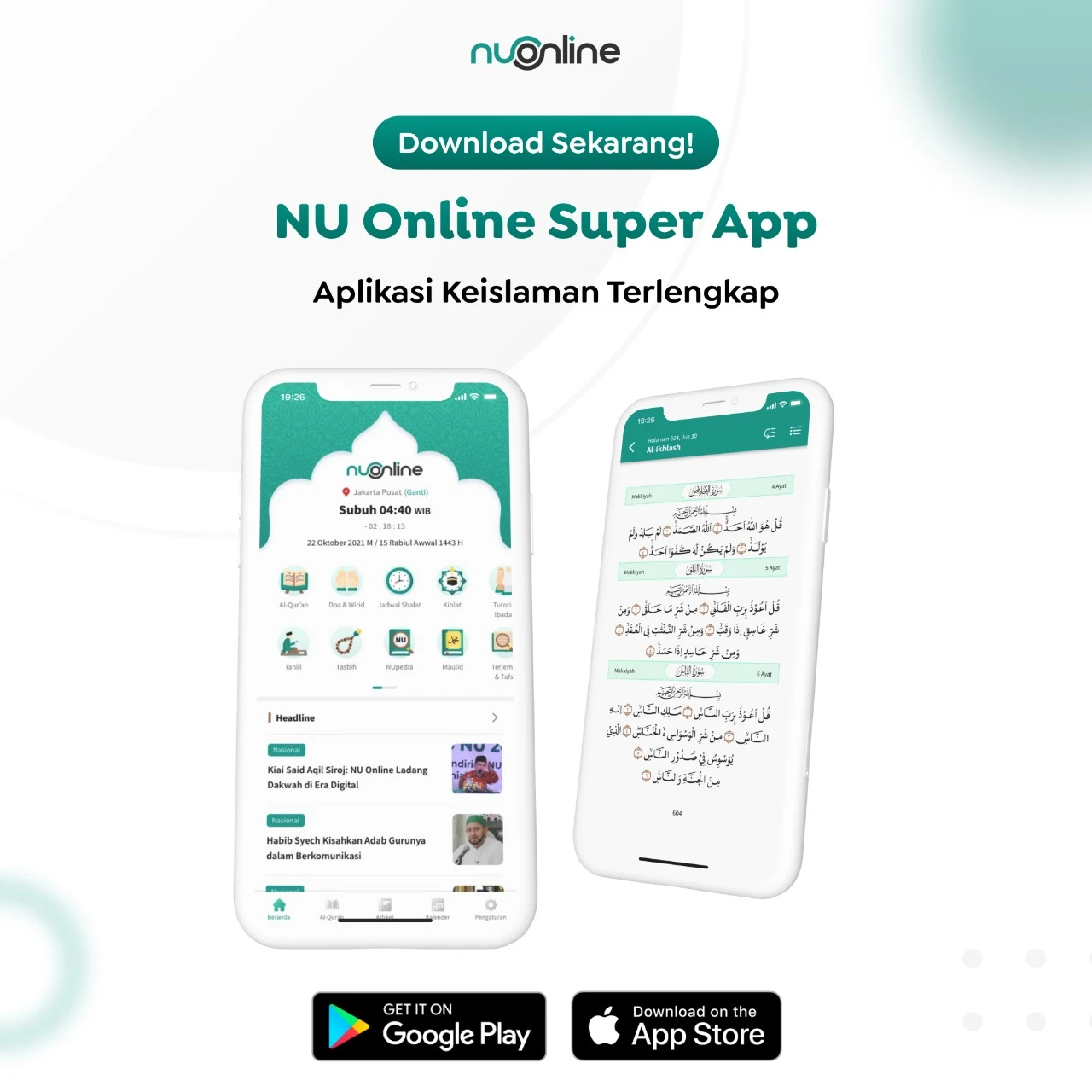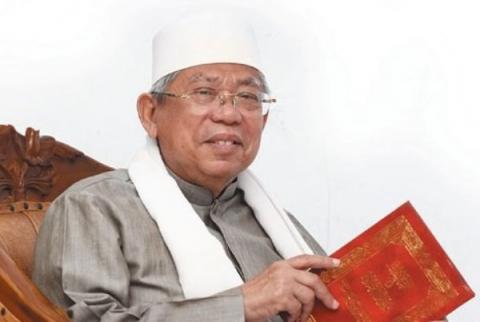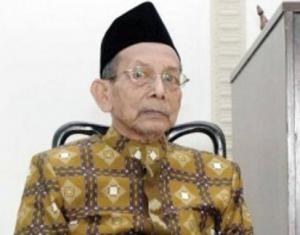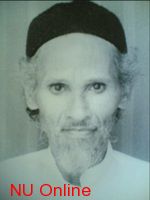Always consistent with Syafi’i Islamic school of thought (madzhab)
NU Online · Jumat, 4 Juli 2008 | 17:13 WIB
Sheikh Sulaiman was born in Candung located approximately 10 kilometers from eastern of Bukittinggi, West Sumatra, 1287 H/1871 and died on 29 Jumadil Awwal 1390H/1 August 1970. He was one of senior figures whose perseverance in advocating Syafi’i school of thought (madzhab). He was popularly named as “Inyik Candung”. His father, Angku Mudo Muhammad Rasul, was an ulema<> publicly respected in his hometown.
His students called him Maulana Syeikh Sulaiman. He had spent most of his childhood to study religion from his father. Before continuing his study to Mecca, Sulaiman ar-Rasuli had ever studied under the supervision of Syeikh Yahya al-Khalidi Magak in Bukittinggi, West Sumatra. At that time Minang people remained enjoying traditional schooling system in Islamic boarding school (surau/pesantren), namely halaqah (discussion) as a means of transferring religious knowledge.
The last educational career of his was in Mecca. Among the ulema living in the same time with him were KH Hasyim Asy’ari from East Java (1287 H/1871 M - 1366 H/1947 M), Syeikh Hasan Maksum from North Sumatra (died in 1355 H/1936 M), Syeikh Khathib Ali al-Minangkabawi, Syeikh Muhammad Zain Simabur al-Minangkabawi (being a Mufti of Perak Kingdom in 1955 and died in Pariaman in 1957), Syeikh Muhammad Jamil Jaho al-Minangkabawi, Syeikh Abbas Ladang Lawas al-Minangkabawi, and so on.
While Malaysia’s ulemas having ever studied with him in Mecca were Syeikh Utsman Sarawak (1281 H/1864 M - 1339 H/1921 M), Tok Kenali (1287 H/1871 M - 1352 H/1933 M), and so on.
When living in the Holy City, Syeikh Sulaiman ar-Rasuli also studied under the supervision of Syeikh Ahmad Khatib Abdul Lathif al-Minangkabawi, and ulema from both Kelantan and Pattani. His teachers in the Holy City were Syeikh Wan Ali Abdur Rahman al-Kalantani, Syeikh Muhammad Ismail al-Fathani, Syeikh Ahmad Muhammad Zain al-Fathani, Syeikh Ali Kutan al-Kelantani, and many other malay ulema living there.
His Struggle
Following his return from Mecca Syeikh Sulaiman established an Islamic boarding school in his hometown, Bukittinggi, West Sumatra. He always tried to defend pesantren-based ‘learning-teaching process’. Finally the traditional process with the halaqah system in which students (santri) sit with the legs crossed started to gradually be combined with schooling system in 1928. While materials and books taught within the ‘modern’ system did not change. Even the halaqah system has still been carried out till now.
Within a short time, the people living in his area have fully supported the existence of his pesantren. The support has in turn made his pesantren admit many students willing to study. The students studying in the pesantren have not only come from his own province, but also from Jambi, Bengkulu, Tapanuli, Aceh, and even Malaysia.
The main material taught in the pesantren was the teaching of Ahlussunnah wal Jamaah and Islamic school of thought primarily founded by Syafi’i. In this regard, Syeikh Sulaiman was so consistent in practicing both the teaching and the school.
In 1928 Syeikh Sulaiman along with his friends like Syeikh Abbas Ladang Lawas and Syeikh Muhammad Jamil Jaho initiated the establishment of what so-called as Persatuan Tarbiyah Islamiyah/Perti (Islamic Educators Association). Through their educational system and struggle, Syeikh Sulaiman and his friends had the courage and perseverance in both defending and holding firmly on one madzhab, namely Syafi’i madzhab.
In addition to being active in religious education, Syeikh Sulaiman was also active in politics and organization. Since 1921 Syeikh Sulaiman with his two best friends, namely Syeikh Abbas and Syeikh Muhammad Jamil and scores of senior ulema (following one of four schools of thought) founded an organization called as ‘Ittihadul Ulema Sumatra’ (Ulema Association of Sumatra). This organization was aimed at upholding and developing the teaching of Ahlussunnah wal Jamaah in accordance with the Syafi’i madzhab. One of their activities was publishing the magazine ‘al-Radd wa al-Mardud’ as a means of explaining and developing the teaching of Ahlussunnah wal Jamaah.
In determining the beginning and the last of Ramadhan, Syeikh Sulaiman tended to OK with the rukyat (sighting moon) method. This is his stand in defending such Islamic feature rooted from the Nusantara legacies. In many things, Syeikh Sulaiman along with the ulema of Perti and other Muslim organizations like Nahdlatul Ulama always defended the characteristics of Islamic traditional values in accordance with the teaching of Ahlussunnah wal Jamaah.
His works
As an ulema, Syeikh Sulaiman produces many works having so far been studied by Muslims throughout the country especially in his hometown Minangkabau, West Sumatra. Among his works are:
1. Dhiyaus Siraj fil Isra‘ Walmi‘raj
2. Tsamaratul Ihsan fi Wiladah Sayyidil Insan.
3. Dawaul Qulub fi Qishshah Yusuf wa Ya‘qub
4. Risalah al-Aqwal al-Washitah fi Dzikri Warrabithah
5. Al-Qaulul Bayan fi Tafsiril Quran
6. Al-Jawahirul Kalamiyyah.
7. Sabilus Salamah fi wird Sayyidil Ummah
8. The Reconciliation between Adat (custom) dan Syara‘ (Islamic law).
9. The Story of Muhammad ’Arif
Terpopuler
1
Khutbah Jumat: Kerusakan Alam dan Lalainya Pemangku Kebijakan
2
Khutbah Jumat: Mari Tumbuhkan Empati terhadap Korban Bencana
3
Pesantren Tebuireng Undang Mustasyar, Syuriyah, dan Tanfidziyah PBNU untuk Bersilaturahmi
4
Mustasyar, Syuriyah, dan Tanfidziyah PBNU Hadir Silaturahim di Tebuireng
5
20 Lembaga dan Banom PBNU Nyatakan Sikap terkait Persoalan di PBNU
6
Gus Yahya Persilakan Tempuh Jalur Hukum terkait Dugaan TPPU
Terkini
Lihat Semua















